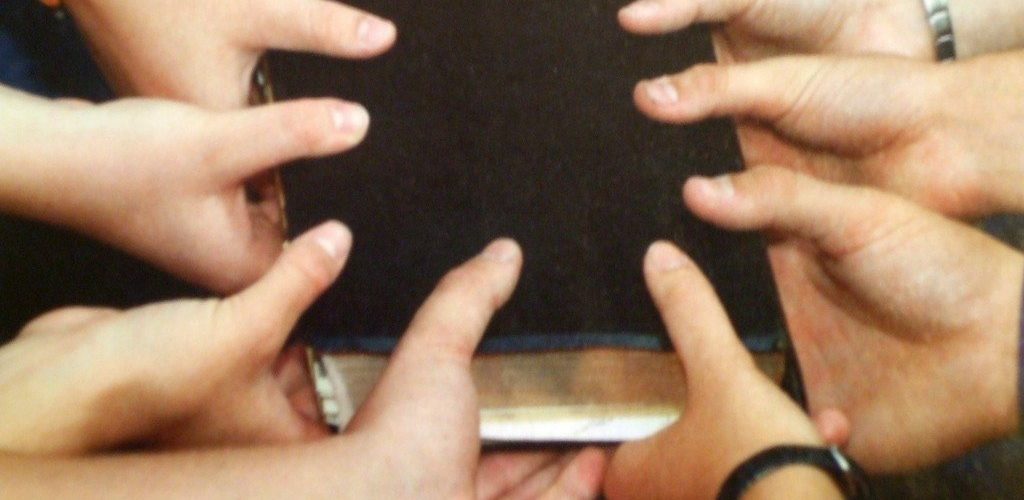We sat down in a close circle, exhaled and focused as we opened the Bible. As each page was read, they became more and more involved. Word after word, they sat drinking in the richness of the sacred texts of God.
Ok. That never happened (in my youth ministry).
But it does happen–with an intentionally led environment.
I’d love to keep working on creating environments where this can happen more.
How can we wet the appetite of our students, to want the Word of God?
How can we engage the texts in ways that make sense to them in their contexts?
How can we change Bible reading from being a religious act to being a relational experience?
Sometimes we have to start by looking at what’s not working. All of us, in our experience in youth ministry, could make a list of things that didn’t work or don’t seem to be working when inviting students to experience the Bible for themselves and together as a community.
I’m sure all of you can recall that Bible study, that group time, that “thing” that you’ll never remember because it wasn’t an opportunity for you to experience it for yourself or as a group.
I’m pretty sure I’ve wrestled with bouts of amnesia because I have done this before. I keep doing what everyone usually does because that’s what we’re “supposed” to do instead of asking good questions and deciding to make changes so another generation can experience God for themselves.
My mind is always drawn back to something I learned in college. Edgar Dale’s Cone of Learning gives us clues about what teaching styles work better. There’s a difference between passive and active learning. And if the clues are on point, which I believe they are, then we shouldn’t relent in looking for new ways for teenagers to actively engage the Bible.
The Cone of Learning suggests that we tend to remember:
– 10% of what we read
– 20% of what we hear
– 30% of what we see
– 50% of what we see and hear
– 70% of what we say
– 90% of what we say and do
So, how do we help students move beyond just seeing the Bible to saying it and doing it themselves?
I don’t think we have far to go in this. I usually am only a few degrees away from where we want to be when I get off track and slip back into the “reading and hearing only” Bible track. Here are a five things that can help us adjust the gauges to get to where we want to be:
1) Get honest about what we are doing in our groups each week.
Are we stuck in a teaching style? Are we offering students chances to see and hear the Bible?
Have we looked for ways for them to repeat what they are seeing and hearing–and also ways to live it out?
2) Move into a more vulnerable position.
Our students aren’t going to engage the Bible just like we do. They have different experiences that impact their interpretations. We give up our right to “be right” when we allow for questions and conversations that come from their worldview as it’s being shaped in their world (that’s different from ours). I’m not saying that we should throw out doctrinal beliefs and statements of faith. I’m suggesting that we’d make room to let our students read from the margins. If they identify more with the pain and surprise of Isaac when being led to be sacrificed by his own father, when you had planned on talking about the feelings of loss that Abraham must have felt when he was asked to sacrifice his son, then let them lean into that and tell you why. The lesson may not go as you planned, but the truths will live on longer as engagement increases.
3) Examine the way we ask questions.
Take a look at the questions you use to engage a text. Are they yes/ no? Are they leading questions? Are they giving students a chance to articulate their faith in the answers? Change the format of your questions.
4) Guide them into experience.
I rarely teach our students about prayer in a sermon or message. I do teach about it, but it’s better to give them chances to pray. What can we do to make the Bible an experience? Our the environments we create places where learning can be lived and practiced?
5) Believe
Hebrews 4:12 says, “The word of God is alive and powerful. It is sharper than the sharpest two-edged sword, cutting between soul and spirit, between joint and marrow.” If we believe this, then, we’ll be even more intentional about sharing it clearly, more often, and in engaging ways. We have such a great source of hope, in our hands, ready for their hearts to receive it.
-Brooklyn



